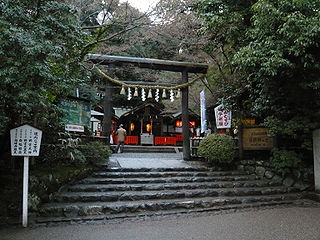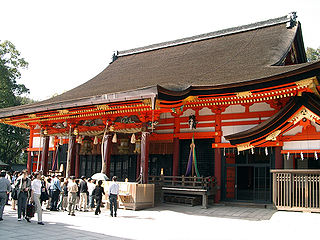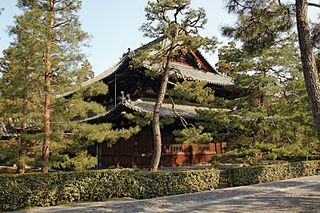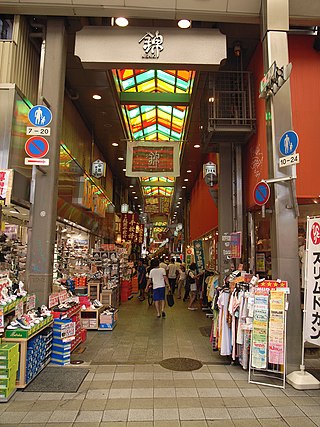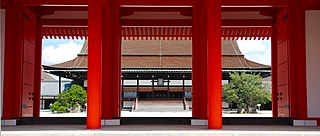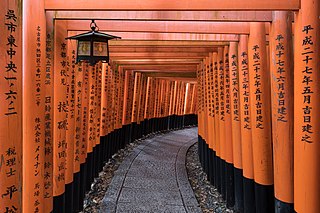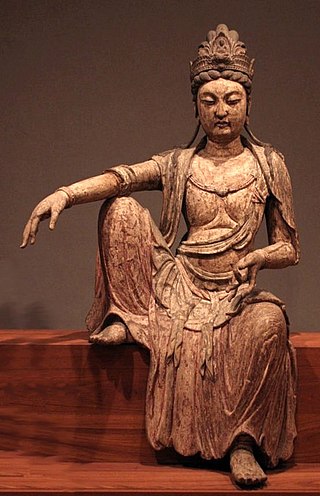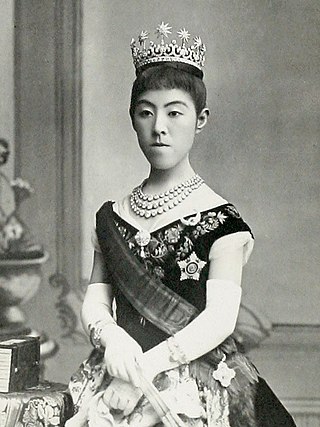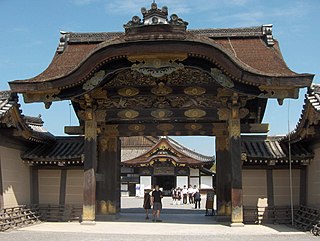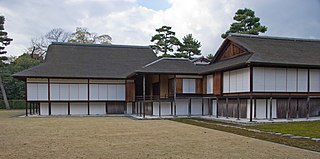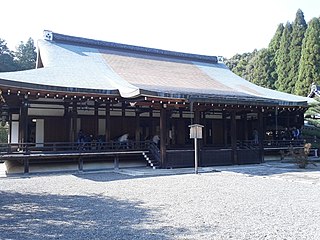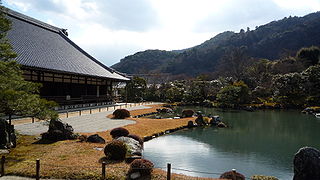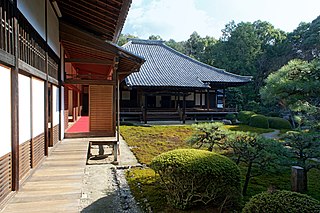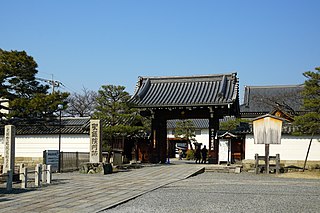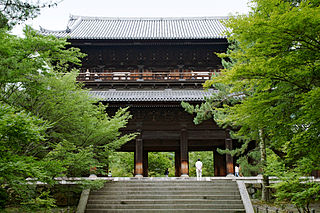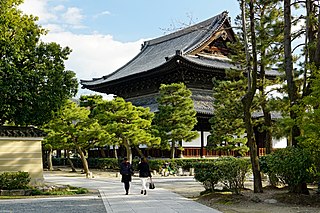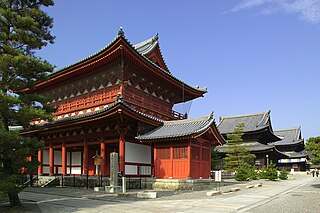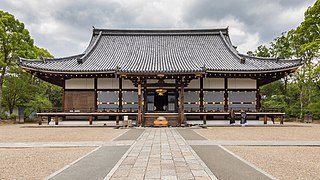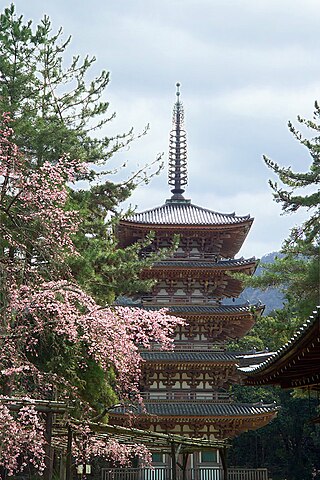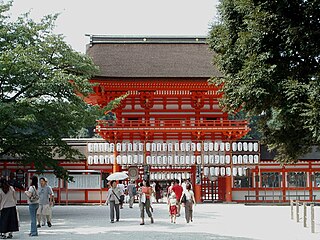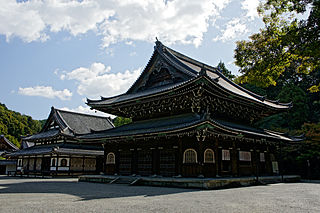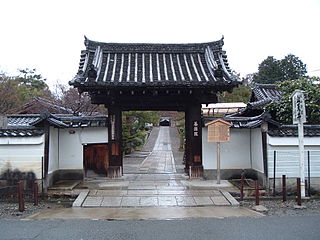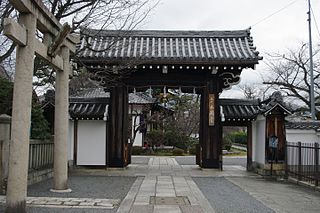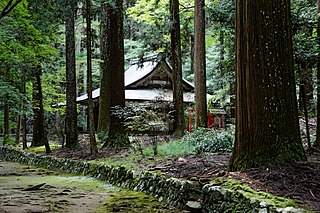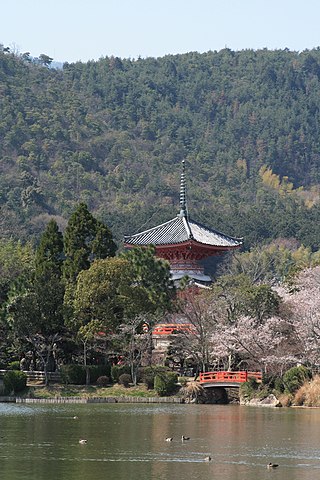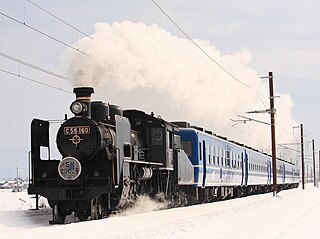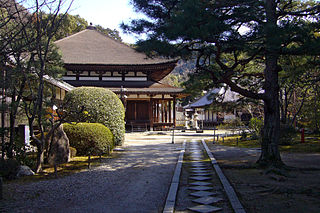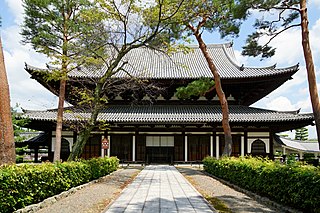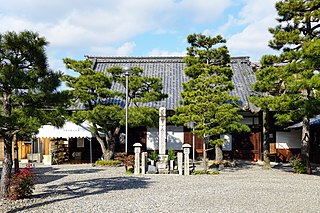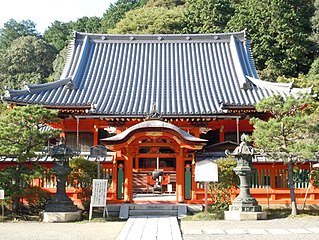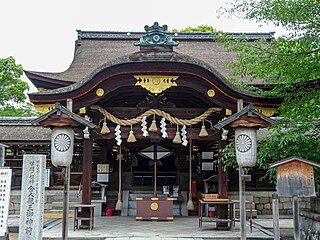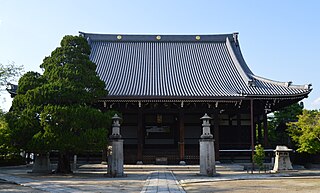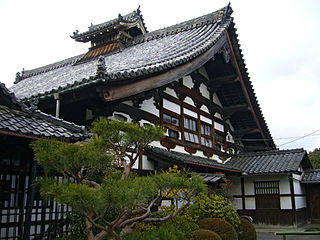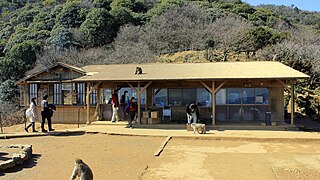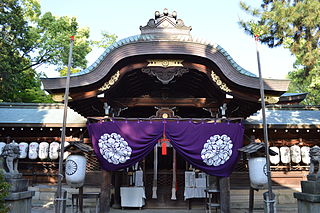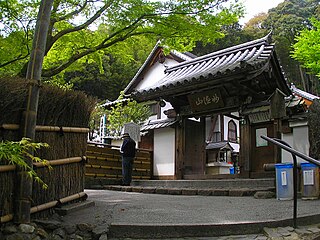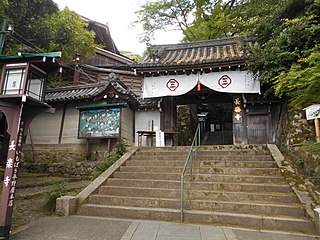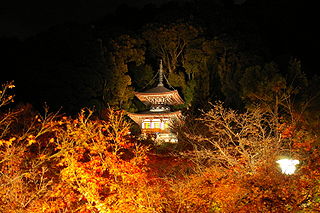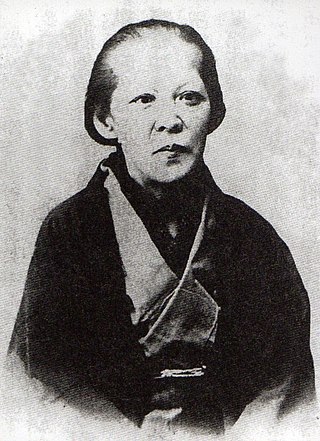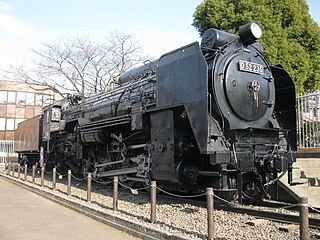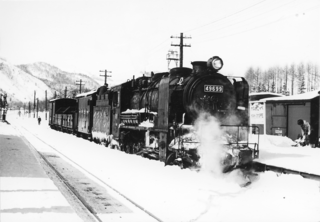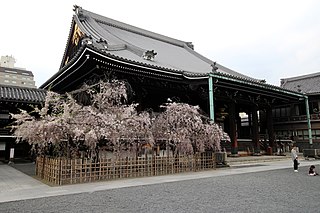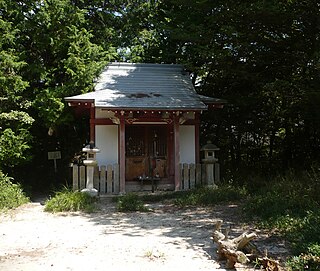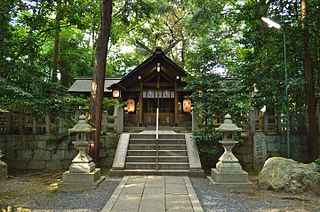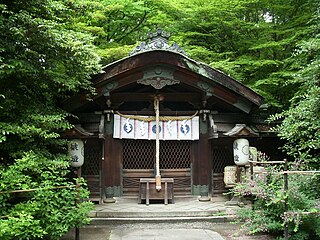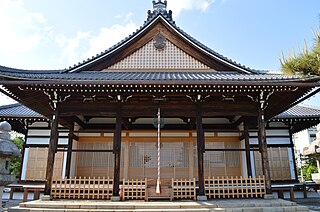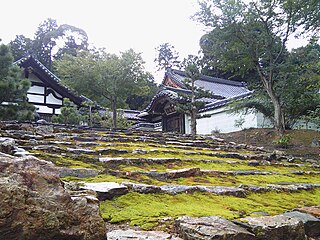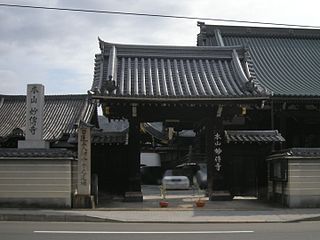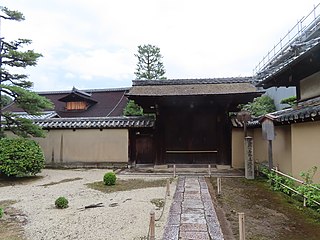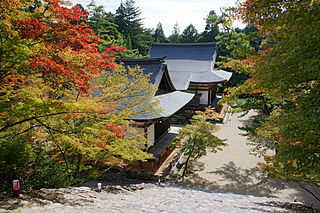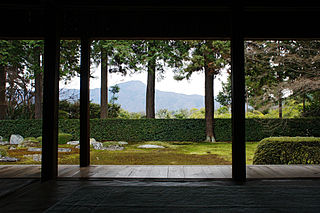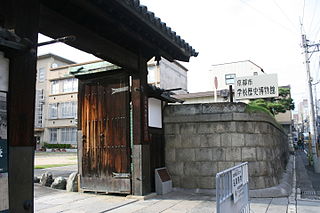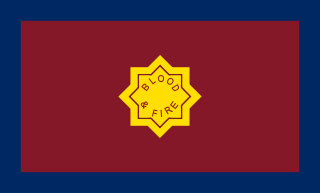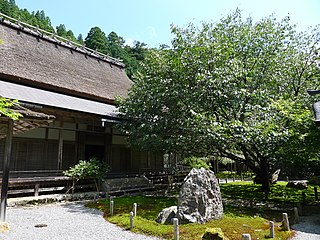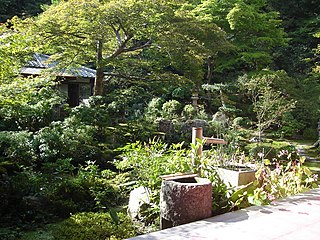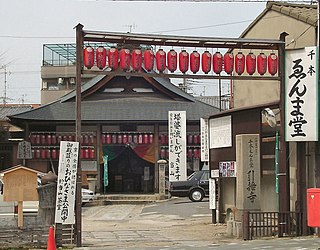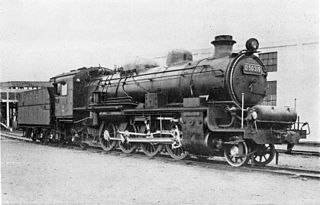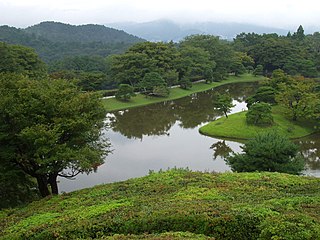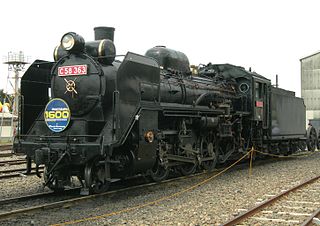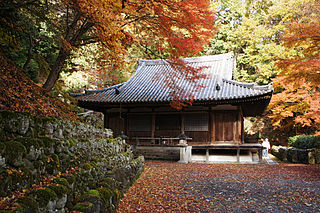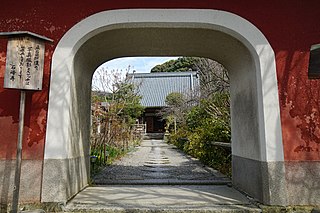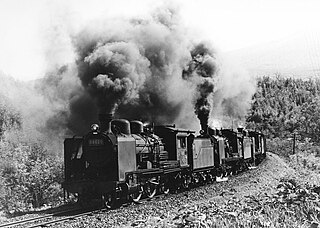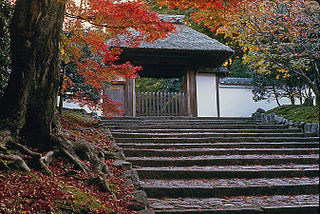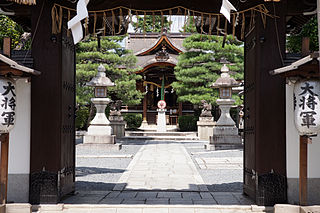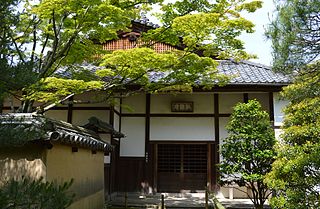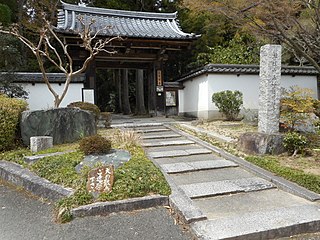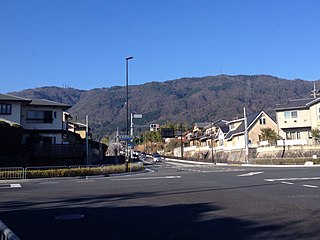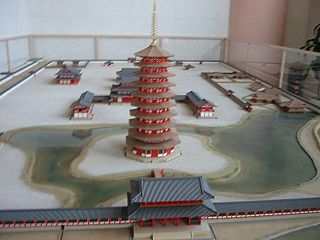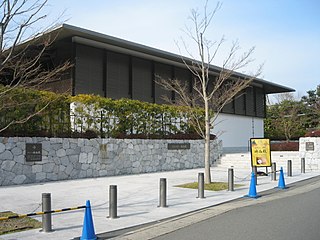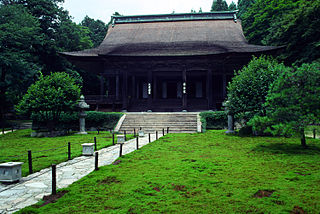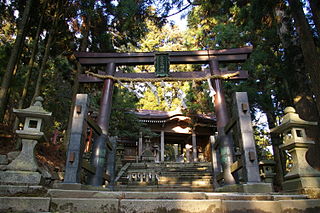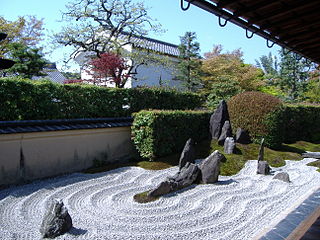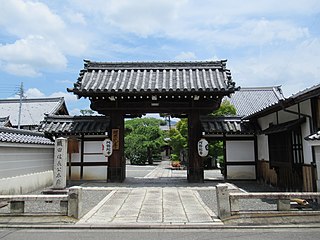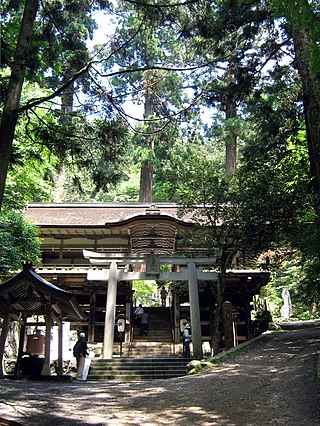100 Sights in Kyoto, Japan (with Map and Images)
Legend
Premium Sights
Book tickets, guided tours and activities in Kyoto.
Guided Free Walking Tours
Book free guided walking tours in Kyoto.
Welcome to your journey through the most beautiful sights in Kyoto, Japan! Whether you want to discover the city's historical treasures or experience its modern highlights, you'll find everything your heart desires here. Be inspired by our selection and plan your unforgettable adventure in Kyoto. Dive into the diversity of this fascinating city and discover everything it has to offer.
Sightseeing Tours in KyotoActivities in Kyoto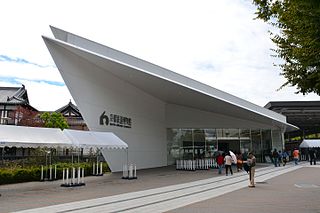
The Kyoto Railway Museum is a railway museum in Shimogyō-ku, Kyoto, Japan. The original Umekoji Steam Locomotive Museum opened in 1972, but was expanded and modernized in 2016, becoming the Kyoto Railway Museum.
Nonomiya Shrine , or the Shrine in the Country, is a Shinto shrine in the Arashiyama district on the west side of the city of Kyoto in Kyoto prefecture, Japan, close to its bamboo forest. The specific site of the shrine changed somewhat over time, as the location of the shrine was fixed anew by divination when a new imperial priestess was to undergo purification before traveling to take up her duties at Ise Shrine.
Yasaka Shrine , once called Gion Shrine , is a Shinto shrine in the Gion District of Kyoto, Japan. Situated at the east end of Shijō-dōri, the shrine includes several buildings, including gates, a main hall and a stage. The Yasaka shrine is dedicated to Susanoo in the tradition of the Gion faith as its chief kami, with his consort Kushinadahime on the east, and eight offspring deities on the west. The yahashira no mikogami include Yashimajinumi no kami, Itakeru no kami, Ōyatsuhime no kami, Tsumatsuhime no kami, Ōtoshi no kami, Ukanomitama no kami, Ōyatsuhiko no kami, and Suseribime no mikoto.
Daitoku-ji is a Buddhist temple, one of fourteen autonomous branches of the Rinzai school of Japanese Zen. It is located in Kita-ku, Kyoto, Japan. The "mountain name" (sangō) by which it is known is Ryūhōzan (龍宝山). The Daitoku-ji temple complex today covers more than 23 hectares.
5. Nishiki Market
Nishiki Market is a marketplace in downtown Kyoto, located on the east end of Nishikikōji Street, one block north and parallel to Shijō Street and west of Teramachi Street . Rich with history and tradition, the market is renowned as the place to obtain many of Kyoto's famous foods and goods.
6. Kyoto Imperial Palace
The Kyōto Imperial Palace is the former palace of the Emperor of Japan, located in Kamigyō-ku, Kyoto, Japan. Since the Meiji Restoration in 1869, the Emperors have resided at the Tokyo Imperial Palace, while the preservation of the Kyoto Imperial Palace was ordered in 1877. Today, the grounds are open to the public, and the Imperial Household Agency hosts public tours of the buildings several times a day.
7. Fushimi Inari-taisha
Fushimi Inari-taisha is the head shrine of the kami Inari, located in Fushimi-ku, Kyoto, Kyoto Prefecture, Japan. The shrine sits at the base of a mountain, also named Inari, which is 233 metres (764 ft) above sea level, and includes trails up the mountain to many smaller shrines which span 4 kilometres (2.5 mi) and take approximately 2 hours to walk up. It is unclear whether the mountain's name, Inariyama, or the shrine's name came first.
8. Kan'non bosatsu
Guanyin is a common Chinese name of the bodhisattva associated with compassion known as Avalokiteśvara. Guanyin is short for Guanshiyin, which means "[The One Who] Perceives the Sounds of the World". Due to sociogeographical factors, Guanyin can be historically depicted as genderless or adorning an androgynous apprentice. On the 19th day of the sixth lunar month, Guanyin's attainment of Buddhahood is celebrated. Guanyin has been appropriated by other religions, including Taoism and Chinese folk religion.
9. D51-1
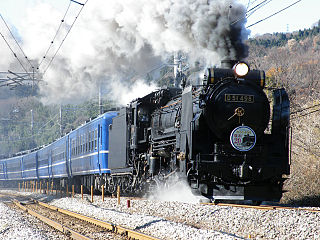
The Class D51 (D51形) is a type of 2-8-2 steam locomotive built by the Japanese Government Railways (JGR), the Japanese National Railways (JNR), and Kawasaki Heavy Industries Rolling Stock Company, Kisha Seizo, Hitachi, Nippon Sharyo, Mitsubishi, and Mitsubishi Heavy Industries from 1936 to 1945 and 1950 to 1951. 174 units are in preservation in Japan, including five operational examples. A further 13 are preserved in Russia and Taiwan, bringing the total number of preserved units to 187.
10. 昭憲皇太后陵
Masako Ichijō , who adopted the imperial given name Haruko (美子) in 1867 and was posthumously honoured as Empress Dowager Shōken , was the wife of Emperor Meiji of Japan. She was one of the founders of the Japanese Red Cross Society, whose charity work was known throughout the First Sino-Japanese War.
11. Nijō Castle
Nijō Castle is a flatland castle in Kyoto, Japan. The castle consists of two concentric rings (Kuruwa) of fortifications, the Ninomaru Palace, the ruins of the Honmaru Palace, various support buildings and several gardens. The surface area of the castle is 275,000 square metres, of which 8,000 square metres (86,000 sq ft) is occupied by buildings.
12. Okuni Statue
Izumo no Okuni was a Japanese entertainer and shrine maiden who is believed to have invented the theatrical art form of kabuki. She is thought to have begun performing her new art style of kabuki theatre in the dry riverbed of the Kamo River in Kyoto. Okuni's troupe quickly gained immense popularity, and were known for their performers, who were often lower-class women Okuni had recruited to act in her all-female theatre group.
13. Katsura Imperial Villa
The Katsura Imperial Villa , or Katsura Detached Palace, is an Imperial residence with associated gardens and outbuildings in the western suburbs of Kyoto, Japan. Located on the western bank of the Katsura River in Katsura, Nishikyō-ku, the Villa is 8km distant from the main Kyoto Imperial Palace. The villa and gardens are nationally recognized as an Important Cultural Property of Japan.
14. Saihoji Temple
Saihō-ji (西芳寺) is a Rinzai Zen Buddhist temple in Matsuo, Nishikyō Ward, Kyoto, Japan. The temple, which is famed for its moss garden, is commonly referred to as "Koke-dera" (苔寺), meaning "moss temple", while the formal name is "Kōinzan Saihō-ji" (洪隠山西芳寺). The temple, primarily constructed to honor Amitābha, was founded by Gyōki and later restored by Musō Soseki. In 1994, Saihō-ji was registered as a UNESCO World Heritage Site, as part of the "Historic Monuments of Ancient Kyoto". Over 120 types of moss are present in the two-tiered garden, resembling a beautiful green carpet with many subtle shades.
15. Heian Shrine
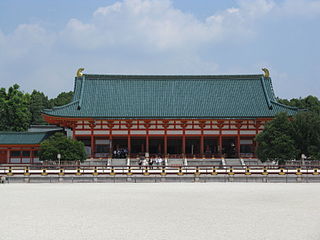
The Heian-jingu Shrine is a Shinto shrine located in Sakyō-ku, Kyoto, Japan. The Shrine is ranked as a Beppyō Jinja (別表神社) by the Association of Shinto Shrines. It is listed as an important cultural property of Japan.
16. Koshoji Temple
Koshōji is the head temple of the Honganji sect of Shin Buddhism located in Hanazono-cho, Shimogyo-ku, Kyoto. The mountain name is Entonzan. The principal image is Amida Nyorai. It is situated immediately south of Nishi Honganji. Once a side gate of Nishi Honganji, it became the head temple of the Honganji sect when it gained independence in 1876. The chief priest is from the Hanazono family, the temple's lineage. As a head temple, it is a large complex, but because it is adjacent to the grand Nishi Honganji, it can easily be mistaken for part of its precincts.
17. Tenryū Temple
Tenryū-ji (天龍寺), formally known as Tenryū Shiseizen-ji (天龍資聖禅寺), is the head temple of the Tenryū-ji branch of the Rinzai sect of Zen Buddhism, located in Susukinobaba-chō, Ukyō Ward, Kyoto, Japan. The temple was founded by Ashikaga Takauji in 1339, primarily to venerate Gautama Buddha, and its first chief priest was Musō Soseki. Construction was completed in 1345. As a temple related to both the Ashikaga family and Emperor Go-Daigo, the temple is held in high esteem, and is ranked number one among Kyoto's so-called Five Mountains. In 1994, it was registered as a UNESCO World Heritage Site, as part of the "Historic Monuments of Ancient Kyoto".
18. Zuishin Temple
Zuishinin is a major temple of the Shingon sect, located in Ono Goryo-cho, Yamashina Ward, Kyoto City. The mountain name is Gyuhiyama, and the main deity is Kannon of the Wish-Fulfilling Wheel. The founder is the monk Ninkai, known as the founder of the Ono school. The temple crest is the Kujo wisteria. The Ono area where the temple is located is considered the base of the Ono clan, and Zuishinin is also known as a temple associated with Ono no Komachi, featuring a delicate love story between Ono no Komachi and the young general Fukakusa.
19. C62-1
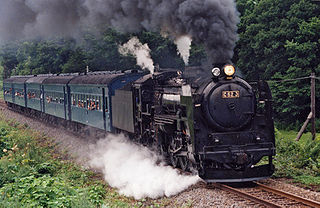
The Class C62 (C62形) is a type of 4-6-4 steam locomotive designed by Hideo Shima and built by the Japanese National Railways (JNR). The "C" classification indicates three sets of driving wheels. The C62 was rebuilt with the boilers of older Class D52 2-8-2 locomotives.
20. Tōfuku-ji
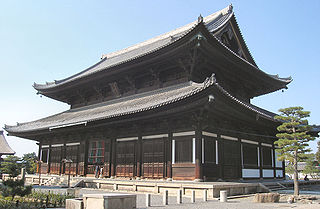
Tōfuku-ji (東福寺) is a Buddhist temple in Higashiyama-ku in Kyoto, Japan. Tōfuku-ji takes its name from two temples in Nara, Tōdai-ji and Kōfuku-ji. It is one of the Kyoto Gozan or "five great Zen temples of Kyoto". Its honorary sangō prefix is Enichi-san (慧日山).
21. 聖護院
Shogo-in is the head temple of the Honsan Shugendo sect located in Nakacho, Sakyo Ward, Kyoto City. It has no mountain name. The principal deity is Fudo Myo-o. The founder is Zo-o. It is also referred to as Shogo-in Monzeki. It was also known as Nishikirin-fu. It was once one of the three monzeki of the Tendai sect.
22. Nanzen-ji
Nanzen-ji , or Zuiryusan Nanzen-ji, formerly Zenrin-ji , is a Zen Buddhist temple in Kyoto, Japan. Emperor Kameyama established it in 1291 on the site of his previous detached palace. It is also the headquarters of the Nanzen-ji branch of Rinzai Zen. The precincts of Nanzen-ji are a nationally designated Historic Site and the Hōjō gardens a Place of Scenic Beauty. The temple was destroyed in a fire in 1895 and rebuilt in 1909.
23. 建仁寺
Kennin-ji is a historic Zen Buddhist temple in Kyoto, Japan, and head temple of its associated branch of Rinzai Buddhism. It is considered to be one of the so-called Kyoto Gozan or "five most important Zen temples of Kyoto".
24. Myōshinji Temple
Myōshin-ji is a temple complex in Kyoto, Japan, which serves as the head temple of the associated branch of Rinzai Zen Buddhism. The Myōshin-ji School is by far the largest school in Rinzai Zen, approximately as big as the other thirteen branches combined: it contains within it about 3,400 temples throughout Japan, together with a handful overseas, of the approximately six thousand total Rinzai temples, and also has nineteen associated monasteries, of the total of forty Rinzai monasteries and one nunnery.
25. Ninna temple
Ninna-ji is the head temple of the Omuro school of the Shingon Sect of Buddhism. Located in western Kyoto, Japan, it was first founded in AD 888 by Emperor Uda, and was later reconstructed in the 17th century. It is part of the Historic Monuments of Ancient Kyoto, a UNESCO World Heritage Site.
26. Chion-in
Chion-in Higashiyama-ku, Kyoto, Japan is the headquarters of the Jōdo-shū founded by Hōnen (1133–1212), who proclaimed that sentient beings are reborn in Amida Buddha's Western Paradise by reciting the nembutsu, Amida Buddha's name.
27. Shimo Daigo
Daigo-ji is a Shingon Buddhist temple in Fushimi-ku, Kyoto, Japan. Its main devotion (honzon) is Yakushi. Daigo, literally "ghee", is used figuratively to mean "crème de la crème" and is a metaphor of the most profound part of Buddhist thoughts.
28. 清浄華院
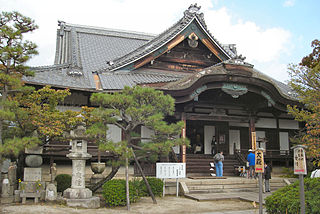
Shojo-in is a temple of the main temple of the Jodo sect located in Kamigyo-ku, Kyoto. The name is only the name of the temple, and there is no name of the mountain or temple. The honzon is a dharma superior. It is one of the seven main temples of the Jodo sect, and one of the four main temples of Kyoto of the same sect (the others are Chion-in, Hyakuban Chion-ji, and Kinsho Komyo-ji). According to the temple tradition, Ennin was founded in the Heian period at the request of Emperor Seiwa. Twenty-five Sacred Places No. 23. As of May 26, 2021 (Reiwa 3), the law owner is Mio Iida.
29. Daisen-in temple
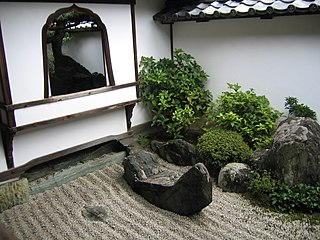
The Daisen-in (大仙院) is a sub-temple of Daitoku-ji, a temple of the Rinzai school of Zen in Buddhism, one of the five most important Zen temples of Kyoto. The name means "The Academy of the Great Immortals." Daisen-in was founded by the Zen priest Kogaku Sōkō , and was built between 1509 and 1513. The Daisen-in is noted for its screen paintings and for its kare-sansui, or dry landscape garden.
30. Jishu Shrine
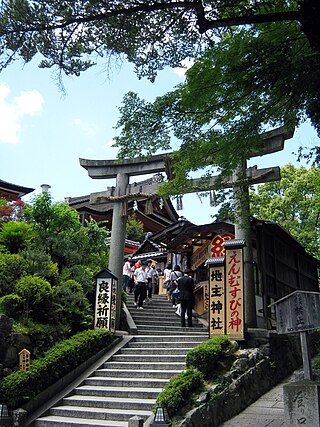
Shrines called landlord shrines are broadly divided into the following. When a shrine or temple is built, a shrine is built to enshrine the landlord god of the land. It may be built as a shrine within the precincts of the shrine, or it may be located adjacent to the temple. Most of the landlord shrines adjacent to the temple were originally part of the adjacent temple (Chinshusha), but most of them became independent due to the separation of Shinto and Buddhist shrines in the Meiji era. In this case, there are also places that read "jinushi jinja". A shrine located in Higashiyama Ward, Kyoto City, Kyoto Prefecture. It is adjacent to Kiyomizu Temple. It is particularly famous among the many landlord shrines in Japan.
31. Shimogamo Shrine
Shimogamo Shrine is an important Shinto sanctuary in the Shimogamo district of Kyoto city's Sakyō ward. Its formal name is Kamo-mioya Shrine . It is one of the oldest Shinto shrines in Japan and is one of the seventeen Historic Monuments of Ancient Kyoto which have been designated by UNESCO as a World Heritage Site. The term Kamo-jinja in Japanese is a general reference to Shimogamo Shrine and Kamigamo Shrine, the traditionally linked Kamo shrines of Kyoto; Shimogamo is the older of the pair, being believed to be 100 years older than Kamigamo, and dating to the 6th century, centuries before Kyoto became the capital of Japan. The Kamo-jinja serve the function of protecting Kyoto from malign influences.
32. Sennyū-ji Temple
Sennyū-ji (泉涌寺), formerly written as Sen-yū-ji (仙遊寺), is a Shingon Buddhist temple and head of the Sennyū-ji sect in Higashiyama-ku in Kyoto, Japan. For centuries, Sennyū-ji has been a mausoleum for noble families and members of the Imperial House of Japan. Located within the temple grounds are the official tombs of Emperor Shijō and many of the emperors who came after him.
33. Yogen-in
Yogen-in is a Jodo Shinshu temple located in Sanjusangendo-mawari-cho, Higashiyama Ward, Kyoto City. The mountain name is Nan'eizan. The main object of worship is Amida Nyorai. It is situated directly across from Sanjusangendo. The name Yogen-in is derived from the posthumous title of Nagamasa Asai. It was originally a Tendai sect temple and is commonly known by the nicknames "Blood Ceiling" and "Sotatsu-ji."
34. 本満寺
Honmanji Temple is a temple of the main mountain (venerable temple) of Nichiren Buddhism located in Kamigyo-ku, Kyoto. The name of the mountain is Guangfu Mountain (広宣流布山). The main Buddha is the Ten Realms Mandala. There are four temples.
35. Kousanji Temple
Kōzan-ji (高山寺), officially Toganōsan Kōsan-ji (栂尾山高山寺), is a Buddhist temple of the Omuro sect of Shingon Buddhism in Umegahata Toganōchō, Ukyō Ward, Kyoto, Japan. Kōzan-ji is also known as Kōsan-ji and Toganō-dera. The temple was founded by the Shingon scholar and monk Myōe (1173–1232) and is renowned for its numerous national treasures and important cultural properties. The Chōjū-jinbutsu-giga, a group of ink paintings from the 12th and 13th centuries, are among the most important treasures of Kōzan-ji. The temple celebrates Biyakkōshin, Zenmyōshin and Kasuga Myōjin, as well as the temple's tutelary Shintō deity. In 1994, it was registered as part of the UNESCO World Heritage Site "Historic Monuments of Ancient Kyoto".
36. Seiganji
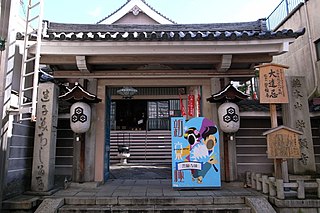
Seiganji is the head temple of the Jodo Shinshu Nishi Honganji sect located on Shinkyogoku Street in Nakagyo Ward, Kyoto. The mountain name is Fukakusa Mountain. The main object of worship is Amida Nyorai. In the main hall, the Eleven-faced Kannon, which is the 15th sacred site of the New Saigoku 33 Kannon Pilgrimage and the 2nd sacred site of the Rakuyo 33 Kannon Pilgrimage, is also enshrined.
37. Daikaku-ji Temple
Daikaku-ji is a Shingon Buddhist temple in Ukyō-ku, a western ward in the city of Kyoto, Japan. The site was originally a residence of Emperor Saga, and later various emperors conducted their cloistered rule from here. The Saga Go-ryū school of ikebana has its headquarters in the temple. The artificial lake of the temple, Ōsawa Pond, is one of the oldest Japanese garden ponds to survive from the Heian period.
38. Ryuko-in temple
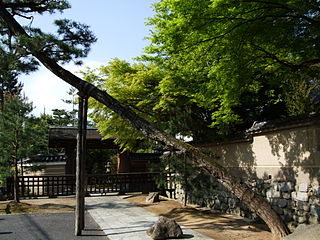
Ryōkoin is a temple of the Rinzai sect located in Murasakino, Kita-ku, Kyoto, Japan. It is the head of the Rinzai sect Daitokuji sect Daihonzan Daitokuji Temple. Although it has many buildings and works of art that are national treasures and important cultural properties, it is a temple that is closed to the public, does not accept any visits for sightseeing purposes, and does not hold any special exhibitions.
39. C56-160
The Class C56 is a type of 2-6-0 steam locomotive built by the Japanese Government Railways (JGR) from 1935 to 1939, and later operated by Japanese National Railways (JNR). They were numbered C56 1-C56 164 a total of 164 were built from 1935 to 1939 locomotives numbered C56 1-C56 90 and C56 161-C56 164 were sent to other countries in Asia during the Second World War. The locomotives were retired in 1974. They were designed by Hideo Shima.
40. 法界寺
Hokaiji Temple is a temple of the Shingon sect of the Daigo sect located in Hinonishidaido-cho, Fushimi-ku, Kyoto. The name of the mountain is Mt. Toko. The honzon is Yakushi Nyorai. Kaizan is considered to be the clearest of Denkyo Daishi. It is the clan temple of the Hino family, a clan of the Fujiwara clan, and is known as Hino Yakushi or Milk Medicine Master.
41. Sho-koku-ji temple
Shōkoku-ji (相国寺), formally identified as Mannen-zan Shōkoku Shōten Zenji (萬年山相國承天禅寺), is a Buddhist temple in northern Kyoto, first founded in 1382 by Ashikaga Yoshimitsu, with the existing temple complex having undergone several periods of extensive reconstruction and rebuilding in the succeeding eras.
42. Rokudouchin-nouji
Rokudōchinnoji Temple is a temple of the Kenninji sect of the Rinzai sect located in Komatsu-cho, Higashiyama-ku, Kyoto. The name of the mountain is Mt. Tsubaki. The honzon is Yakushi Nyorai. It is known for the "Six Paths" from August 7 to 10, the well where Ono is said to have passed through the underworld. It is commonly known as "Mr. Rokudo". This area is said to be the "Tsuji of the Six Paths".
43. C57-1
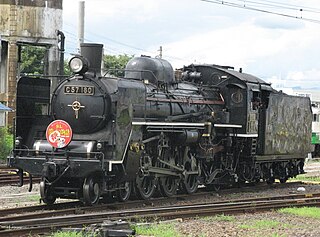
The Class C57 (C57形) is a type of 4-6-2 steam locomotive built in Japan from 1937 to 1947. A total of 201 Class C57 locomotives were built and designed by Hideo Shima. Another 14 Class C57 locomotives were built for export to Taiwan in 1942 and 1953.
44. Bishamondō
Bishamondo is a temple of the Tendai sect located in Yamashina-ku, Kyoto. The name of the mountain is Mt. Goho. The main temple is Bishamonten. The official name is Gohozan Ankokuin Izumo-ji. It is one of the ruins of the Tendai sect of Kyoto and is also called Yamashina Bishamondo and Bishamondo Gate Ruins.
45. 藤森神社
Fujinomori Shrine is a shrine located in Fukakusa, Fushimi Ward, Kyoto City. Its former rank was a prefectural shrine. It is the guardian deity of the Fukakusa area in Fushimi Ward and the Honmachi and Fukuina areas in Higashiyama Ward.
46. Myoken-ji Temple
Myoken-ji is a major temple of the Nichiren sect located in Myokenji-mae Town, Kamigyo Ward, Kyoto City. Its mountain name is Gakusuzan, and its main object of worship is the Sanbōson. There are nine sub-temples. It is also referred to as "Shikai Shōdō" and "Shijō Monryū." Together with Myōkaku-ji and Ritsuhon-ji, it is known as the "Three Gakusoku of Ryūge." The current head priest is the 68th, Oikawa Nichishū, who succeeded from Myōkaku-ji.
47. Shunkouin temple
Shunkō-in is a Zen Buddhist temple in Kyoto, Japan and belongs to the Myōshin-ji school, which is the largest among 14 Japanese Rinzai Zen Buddhist schools. The temple was established in 1590 by Horio Yoshiharu, who was a feudal lord, or daimyō, of Matsue in present-day Shimane Prefecture. This temple houses important historical objects that reflect the multifaceted religious and artistic atmosphere in Japan from the sixteenth century onward.
48. 今熊野観音寺
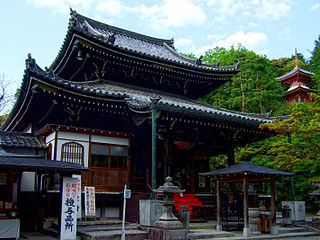
Imakumano Kannonji Temple is a temple of the Shingon sect of the Senjoji sect located in Senjoji Yamauchi-cho, Higashiyama-ku, Kyoto. The head of the tower of Sohonzan Senchung Temple. The name of the mountain is Mt. Shinnachi. The honzon is the eleven-sided Kannon. The official name of the temple is Kannonji, but it is also known by the common name of "Imakumano". 33 West Country No. 15 Temple. Luoyang Thirty-Three Guanyin Shrine No. 19.
49. Monkey Park Iwatayama
Iwatayama Monkey Park is a commercial park located in Arashiyama in Kyoto, Japan. The park is located atop Mount Arashiyama, on the opposite side of the Ōi River of the train station. It is inhabited by a troop of over 120 Japanese macaque monkeys. The animals are wild but can be fed by the staff and visitors with food exclusively purchased at the site. The main reason why these wild macaques choose to stay in the park, is so that they can feed on the food given by the staff. The feeding system includes corn and wheat handed out every two hours from 9:30 to 5:30.
50. 上御霊神社
Kamigoryōjinja is a shrine located in Kamigorei-cho, Kamigyo-ku, Kyoto. The former company name was Fusha. The name of the shrine corresponds to the lower Gorei Shrine, and the official name of the religious corporation is now "Mirei Shrine".
51. 7105
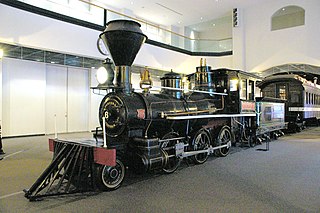
The JGR Class 7100 is a class of Japanese steam locomotive which was first used in Hokkaido, upon the establishment of the government-sponsored Horonai Railway in 1880. The locomotives were imported from the United States.
52. Suzumushi Temple
Kegonji Temple is a temple of the Rinzai sect located in Nishikyo-ku, Kyoto City, Kyoto Prefecture. The name of the mountain is Mt. Myotoku. The honzon is Dainichi Nyorai. Because bellworms are bred throughout the four seasons, it is commonly called "Suzumushidera".
53. Chōraku-ji Temple
Chorakuji is a Jishu (Yugyo-ha) temple located in Maruyama-cho, Higashiyama Ward, Kyoto City. Its mountain name is Odaizan. The principal image is Junsei Kannon. It is situated southeast of Maruyama Park. The former precincts were vast, including most of Maruyama Park and a large part of the Otani family temple (Higashi Otani) of the Honganji sect. It is the 7th temple of the 33 Kannon sacred sites in Kyoto.
54. Eikan-dō Zenrin-ji Temple
Eikan-dō Zenrin-ji (永観堂禅林寺) is the head temple for the Seizan branch of Japan's Jōdo-shū Buddhist sect, located in Kyoto, Sakyō-ku. It was founded by Shinshō, a pupil of Kūkai, and is famous for its fall foliage and for its prominence in the past as a center of learning.
55. Narasaki Ryō
Narasaki Ryō was a Japanese woman and the wife of Sakamoto Ryōma, an architect of the Meiji Restoration. She is commonly called Oryō (お龍) in Japan. After the death of her first husband, she married the merchant Nishimura Matsubē and was renamed Nishimura Tsuru .
56. D52-468
The Class D52 is a type of 2-8-2 steam locomotive built by the Japanese Government Railways and various manufacturers: Kisha Seizo, Nippon Sharyo, Kawasaki Heavy Industries Rolling Stock Company, Hitachi, and Mitsubishi Heavy Industries from 1943 to 1946. The name consists of a "D" for the four sets of driving wheels and the class number 52 for tender locomotives that the numbers 50 through 99 were assigned to under the 1928 locomotive classification rule.
57. 9633
The Class 9600 (9600形) is a type of 2-8-0 steam locomotive built by Japanese Government Railways from 1913. The Class 9600 was the first type of locomotive to be mass-produced by Japanese manufacturers. The Class 9600 were popularly known as Kyuroku (nine-six), and were extensively used for freight service throughout Japan. They were numbered 9600-9699, 19600-19699, 29600-29699, 39600-39699, 49600-49699, 59600-59699, 69600-69699 and 79600-79669. All 770 remained in service until the 2nd of March 1976, when all steam-hauled service on JNR's network has been phased out.
58. Jakkō-in
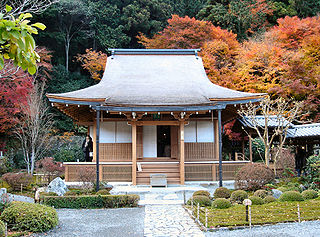
Jakkoin is a Tendai sect temple located in Ohara, Sakyo Ward, Kyoto. It is a nunnery. The mountain name is Seikozan, and the temple name is Gyokusenji. The principal image is Jizo Bodhisattva. It is said to have been founded by Prince Shotoku. It is known as the place where Taira no Tokiko, the daughter of Taira no Kiyomori, took refuge after the fall of the Taira clan, and is associated with the Tale of the Heike.
59. Bukkoji Temple
Bukkō-ji , also known as the "Temple of the Buddha's Light", was originally named Kōshō-ji, a Jōdo Shinshū temple in the Yamashina ward of Kyoto, which later moved to the heart of Kyoto. The temple was founded and officially opened by a disciple named Ryōgen in 1324, but by the 15th century, Bukkō-ji was the largest and most successful temple, and its network of branch temples extending throughout the provinces of western Japan. As a rival to the Hongan-ji, it received much criticism for its evangelical practices from Kakunyo the head of the Hongan-ji. Around 1481, however, Bukkō-ji became a subordinate temple to the Hongan-ji. Many of the Bukkō-ji's congregation thus became members of the Hongan-ji, thus greatly reducing the stature.
60. 将軍山城
Shogun Yamashiro (shogun Yamashiro) was a Japan castle (mountain castle) of the Sengoku period located on Mount Uryu (301 meters above sea level) in Kitashirakawa Kiyosawaguchi-cho (Yamashiro Kuni Atago District), Sakyo-ku, Kyoto, Japan. It is also known as Kitashirakawa Castle, Uryuyama Castle, and Shogunjizo Yamajo Castle.
61. Kyoto Municipal Museum of Art
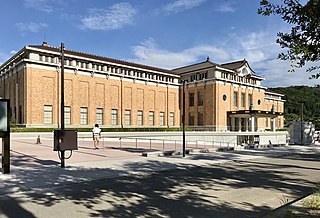
The Kyoto City KYOCERA Museum of Art (京都市京セラ美術館) is located in Okazaki Park in Sakyō-ku Kyoto. Formerly Kyoto Municipal Museum of Art , it is one of the oldest art museums in Japan. it opened in 1928 as Shōwa Imperial Coronation Art Museum of Kyoto, a commemoration of Emperor Hirohito's coronation.
62. Konoshima Shrine
Kijima Za Amaterasu Soul Shrine (Konoshimani Masu Amateru Mitamajinja, Kijima Za Amaterasu Soul Shrine) is a shrine located in Uzumasa Morigahigashi Town, Ukyo Ward, Kyoto. It is a Shikinai shrine (Meishin Taisha), and the former company name is Gosha.
63. 梨木神社
Nashiki Shrine is a shrine located in Someden-cho, Kamigyo-ku, Kyoto. The former company status is a separate government company. The shrine is dedicated to the father and son of Mimi Sanjo, who contributed greatly to the Meiji Restoration. In addition, about 500 hagi plants are planted in the temple grounds, also known as Hagi no Miya, and the Hagi Festival is held in mid to late September.
64. myorenji
Myorenji is a head temple of the Honmon Hokke sect located in Myorenji-mae Town, Kamigyo Ward, Kyoto City. Its mountain name is Ubokusan. The main object of worship is the Ten Realms Mandala. It is famous for its hibiscus.
65. 妙光寺
Myokoji is a Rinzai sect temple of the Kenninji school located in Uta-no-Kaminotani-cho, Ukyo-ku, Kyoto City, Kyoto Prefecture. The mountain name is Shokakuzan. The principal image is Shakyamuni Buddha, the founder is Shikyoin Shikei, and the founder of the temple is Kokochi Gakushin (Mubon Gakushin / Hotto Kokusai).
66. 妙伝寺
Myodenji Temple is a head temple of the Nichiren sect located in Kitamonmae-cho, Sakyo-ku, Kyoto City, Kyoto Prefecture. Its mountain name is Hokkyozan. There are five sub-temples (Myoshakuin, Enritsuin, Ryugakuin, Honkoin, and Gyokukiin).
67. Shinju-an temple
Shinjuan is the head of the Rinzai sect Daihonzan Daitokuji Temple in Murasakino, Kita-ku, Kyoto, Japan. It is a temple related to Ikkyu Sojun, who is famous as an unconventional Zen monk. It is usually closed to the public, except during special public occasions.
68. Jingo Temple
Jingo-ji (神護寺) is a Buddhist temple in Kyoto. It stands on Mount Takao to the northwest of the center of the city. The temple adheres to Shingon Buddhism. Its principal image is a statue of Bhaisajyaguru, the Buddha of Healing or "Medicine Buddha".
69. Entsu-ji
Entsuji Temple is a temple of the Rinzai sect of Myoshinji sect located in Iwakura Hataeda-cho, Sakyo-ku, Kyoto. The name of the mountain is Mt. Daisashi. The main temple is Saint Kannon. It is known for its Entsuji Gardens (a national scenic spot).
70. Kyoto Municipal Museum of School History
The Kyoto City School History Museum is a museum located in Kyoto City, Kyoto Prefecture. Until 2010 (Heisei 22), the Kyoto City Lifelong Learning Promotion Foundation was operated, and from 2011 (Heisei 23), the Kyoto City Board of Education was operated. In addition to a permanent exhibition centered on the former program elementary school, a special exhibition is held four to five times a year. The first director is Masaaki Ueda (~ 2005), and the current director is Junayuki Uemura.
71. Salvation Army Kyoto Corps
A Salvation Army corps is a local church organization and physical place of worship in The Salvation Army. Like the Christian term "church" a corps includes both the physical building and the body of members who attend at the building. In keeping with Salvationist convention in using military terminology, corps are sometimes casually known as barracks. Traditionally many corps buildings are alternatively called temples or citadels, such as Openshaw Citadel. The Salvation Army also uses the more traditional term "church" for some local congregations and their buildings.
72. Joshoko-ji Temple
Joshouji Temple is a temple of the Tenryuji sect of the Rinzai sect located in Ukyo-ku, Kyoto. The name of the mountain is Daiō Meizan. The main Buddha is Buddha. The detailed name is Daeongmeizan Manju Josho Emperor Zen Temple, and it is a temple related to His Holiness Kōgan. The area around the temple is designated as a Joshonoji Kyoto Prefectural Historic and Natural Conservation Area.
73. Jisso-in Temple
Jissoin is a standalone temple of the Tendai sect located in Iwakura Kamikuracho, Sakyo Ward, Kyoto City. Its mountain name is Iwakurayama, and its principal image is Fudo Myo-o. The founder is Shoki. It is one of the monzeki temples and is also referred to as Iwakura Jissoin Monzeki. It was once one of the three monzeki of the Tendai sect.
74. Tenju-an
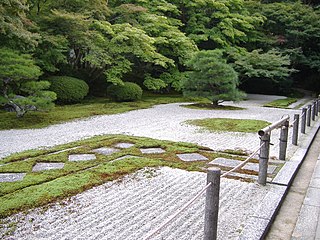
Tenshu-an is a Rinzai Zen temple located in Fukuchi-cho, Nanzenji, Sakyo-ku, Kyoto. It is a sub-temple of the main Nanzen-ji temple. The mountain name is Zuiryusan, and the principal image is Shakyamuni Buddha. It was established by the 15th abbot of Nanzen-ji, Kokan Shiren, as a place to enshrine the founder of Nanzen-ji, Mukan Fumon (Daimyo Koshin).
75. 引接寺
Injoji Temple is a temple of the Koyasan Shingon sect located in Senbondori Rozanji Temple, Kamigyo-ku, Kyoto. The name of the mountain is Mt. Kwangmyeong. The main Buddha is the King of Magic. It is commonly known as Senbon Zhenma-do. He is known for his spring nembutsu kyogen.
76. Higashi-Tenno Okazaki-Jinja
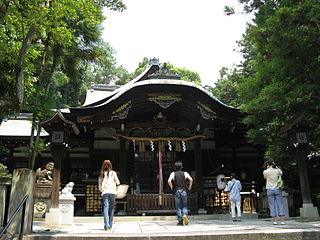
Okazaki Shrine is a shrine located in Okazaki Higashi-Tenno-cho, Sakyo-ku, Kyoto. It is also known as the "Eastern Heavenly King". Since the surrounding area was once the habitat of wild rabbits, rabbits are said to be the messengers of the gods.
77. D50-140
The Class D50 is a type of 2-8-2 steam locomotive built by the Japanese Government Railways (JGR), the Japanese National Railways (JNR) and various manufacturers from 1923 to 1931. The class name indicates that the locomotive has four sets of driving wheels (D) and belongs to one of the classes of tender locomotive allocated a number in the series 50 to 99 in the Japan Railways locomotive numbering and classification scheme of 1928. Hideo Shima designed the rest of the class until 1931.
78. 宝厳院
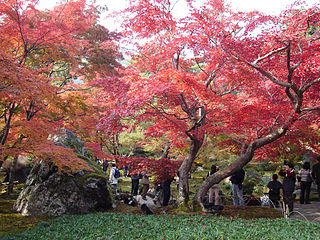
Hogon-in is a Rinzai sect temple located in Saga Tenryuji, Ukyo Ward, Kyoto City. It is a sub-temple of the main temple Tenryuji. The mountain name is Daigamezan, and the principal image is the Eleven-faced Kannon. The gardens and buildings are used for filming period dramas. Additionally, the term "aomomiji" originated from the "momiji" of the temple in early summer.
79. Shugaku-in Imperial Villa
The Shugaku-in Imperial Villa , or Shugaku-in Detached Palace, is a set of gardens and outbuildings in the hills of the eastern suburbs of Kyoto, Japan. It is one of Japan's most important large-scale cultural treasures; its gardens are one of the great masterpieces of Japanese gardening.
80. C58-1
The Class C58 is a 2-6-2 wheel arrangement steam locomotive type built by the Japanese Government Railways (JGR) and Japanese National Railways (JNR) from 1938 to 1947. A total of 427 Class C58 locomotives were built and designed by Hideo Shima. Two members of the class are preserved in working order.
81. Murin-an
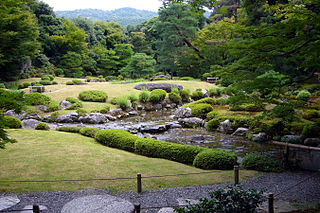
Murin-an (無鄰菴) is a Japanese garden in Kyoto, owned by political and military leader Gensui Prince Yamagata Aritomo, designed by Ogawa Jihei and built between 1894 and 1898. It is an example of a classical Japanese promenade garden of the Meiji Period.
82. Nanzen-in Temple
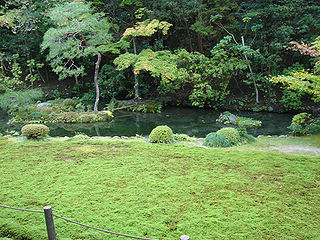
Nanzen-in is a temple of the Nanzenji sect of the Rinzai sect located in Fukuchi-cho, Nanzenji, Sakyo-ku, Kyoto. The head of the pagoda of Daihonzan Nanzen-ji Temple. The main statue is a statue of His Holiness Kameyama. It is said to be the birthplace of Nanzenji. In front of the gate, a waterway pavilion built as part of the Lake Biwa Irrigation Project passes.
83. Otagi Nenbutsu Temple
Otagi Nenbutsu-ji is a Buddhist temple located in the hillside of the Arashiyama neighborhood of Kyoto, Japan. It is known for the 1200 moss-covered rakan statues that cover the hillside around the temple grounds.
84. Sekihoji
Sekihoji Temple is a temple of the Yellow Wood sect located in Fukakusa Ishiminejiyamacho, Fushimi-ku, Kyoto. The name of the mountain is Hyakujozan. The main Buddha is Buddha. It is also written as "Ishimine Temple".
85. 8630
The Class 8620 (8620形) is a type of 2-6-0 steam locomotive built in Japan from 1914 to 1929. It was Japan's first mass-produced passenger locomotive. A total of 672 Class 8620 locomotives were built. Originally they had a symmetry of line with shapely cast iron chimneys which gave way to plainer chimneys and smoke deflectors were added in later years.
86. C61-2
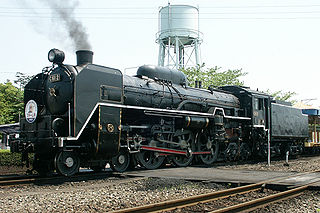
The Class C61 (C61形) is a class of steam locomotives formerly operated in Japan. The class was the first type in Japan to use the 4-6-4 "Hudson" wheel arrangement and was designed by Hideo Shima. A total of 33 locomotives in the class were built between 1947 and 1949. The locomotives were not built entirely from scratch, however, but used boilers from former D51 2-8-2 "Mikado" freight locomotives.
87. 安楽寺
Anrakuji Temple is a temple of the Jodo sect located in Shikagaya Goshonodancho, Sakyo-ku, Kyoto. The name of the mountain is Mt. Sumiren. The honzon is Amitabha. At the beginning of the Kamakura period, the disciples of the founder of the Pure Land sect, Hōren, Sumirenbo (hereinafter referred to as Sumiren) and Anrakubo (hereinafter referred to as Anraku), established a dojo for the Buddha of Pure Land Buddhism. It is famous for its pumpkin offering, which is held in July to pray for protection from the wind. It is also commonly known as Matsumushi Suzumushi Temple.
88. Daishogun Hachi Shrine
Daishogun Hachijinja is a shrine located in Kamigyo-ku, Kyoto. The main deity is the Rustic Son. The original priest was a great general. The name of the shrine, "Eight Shrines," comes from the place where it enshrines the Eight Generals, the calendar god of the Yin-Yang Way, and later it also overlapped with the meaning of the Eight Pillars of the Son God of the Rustic Spirit.
89. Koho-an temple
Kohōan is a Rinzai Zen temple located in the Kurama area of Kyoto City, Kyoto Prefecture. It is a sub-temple of the Daitoku-ji, the head temple of the Daitoku-ji branch of Rinzai Zen. It is situated at the western edge of the Daitoku-ji precincts, away from the other sub-temples. The name "Kohō" means "a single thatched boat" and was given to it by Shun'ya Sōen, whom Kobori Masakazu (Enshū) studied under. Although it is not open to the public, there are special openings for about ten days every few years.
90. Shōden Temple
Shodenji Temple is a temple of the Nanzenji sect of the Rinzai sect located in Kita-ku, Kyoto. The name of the mountain is Mt. Kichijo. The main Buddha is Buddha. The name of the temple is called Shoden Gokokuzenji for details. It has the prestige of Moroyama.
91. Mt. Koshio
Oshioyama is a mountain located in Nishikyo-ku, Kyoto City, Kyoto Prefecture. At an altitude of 642 m, it is the second highest peak in the Nishiyama Mountains. It is designated as a Koshioyama Kyoto Prefectural Historic and Natural Conservation Area (28.38 ha).
92. 法勝寺九重塔址
Hosshō-ji was a Buddhist temple in northeastern Kyoto, Japan, endowed by Emperor Shirakawa in fulfillment of a sacred vow. The temple complex was located east of the Kamo River in the Shirakawa district; and its chief architectural feature was a nine-storied octagonal pagoda.
93. Saga Arashiyama Museum of Arts and Culture
The Saga Arashiyama Museum of Arts and Culture is a museum in Arashiyama, Kyoto, Japan, centered on the Ogura Hyakunin Isshu anthology of waka poems compiled by Fujiwara no Teika in the 13th century. The museum was founded by former Nintendo president Hiroshi Yamauchi, who invested more than $20 million in the facility. Shigureden's Autumn Shower Palace hall was designed by Nintendo game producer Shigeru Miyamoto.
94. Shōrin Temple
Shorin-in is a temple of the Tendai sect located in Ohara Shorin-in-cho, Sakyo-ku, Kyoto. The name of the mountain is Uoyama. The honzon is Amitabha. It is called Uoyama Daiharaji Shorin-in. Uoshan Dayuan Temple is a generic name for the former Gokuraku-in, Shorin-in, Laiying-in and its children's temples, and is derived from the name of the sacred place of the declaration "Uoyama" located in Shandong Province, outside Chang'an, China, which was the center of the statement. It is located in the 21st temple of the 25th Sacred Site of the Dharma Superior, north of the Sansen-in. It is also known as "Question and Answer Temple" and "Evidence Hall". Since ancient times, it has been the dojo of the Tendai Statement along with the Raiyoin Temple (Ohara Rai-yi-in Town, Sakyo Ward).
95. Atago Shrine
Atago Shrine is a Shinto shrine on Mount Atago, the northwest of Kyoto, Japan. Enshrined is Atago Gongen who protects Kyoto from fire. Shugendō practices and a place for worship are known from the eighth century. The late-Kamakura period Honden has been designated an Important Cultural Property. Atago Jinja is the head of nine hundred Atago shrines throughout Japan.
96. Zuihō-in temple
Zuihoin is a temple of the Daitokuji sect of the Rinzai sect located in Murasakino Daitokuji-cho, Kita-ku, Kyoto. The head of the tower of Daitokuji Temple. The name of the mountain is Longpao Mountain. The main Buddha is Guanyin Bodhisattva. There is a grave of Mr. and Mrs. Otomo Yoshizhen in the temple grounds.
97. Kohrin-in temple
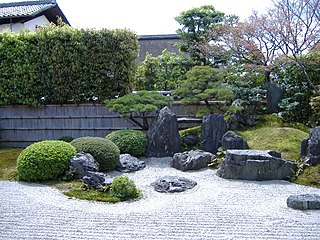
Korin-in is a temple of the Rinzai sect located in Daidokutokuji-cho, Kuramae, Kita-ku, Kyoto. It is a sub-temple of the main temple Daitoku-ji. The principal image is Shakyamuni Buddha. It is not open to the public except on special viewing days.
98. 阿弥陀寺
Amidaji is a Jodo sect temple located in Kamigyo Ward, Kyoto City. Its mountain name is Rendaizan and its temple name is Sokin-in. The main deity is Amida Nyorai. It is known for being the burial site of Oda Nobunaga.
99. Yuki Shrine
Yuki Shrine is a shrine located in Kurama Honcho, Sakyo-ku, Kyoto. It is commonly known as Yukimyojin. Ōki and Nahiko are collectively called "Yuki Daimyojin" as the main deities, and Yasho Daimyojin is enshrined in the Aiden. It is the shrine of Kurama Temple.
100. Giō-ji Temple
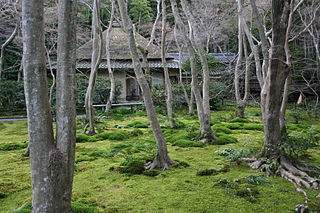
Gioji Temple is a temple (nunnery) of the Daikakuji sect of the Shingon sect located in Saga, Ukyo Ward. The head of the tower outside the precincts of Daikakuji Temple. The name of the mountain is Mt. Takamatsu. The name of the hospital is Yusei-in. The honzon is Dainichi Nyorai. It is known for its moss garden, and the autumn foliage is spectacular.
Share
How likely are you to recommend us?
Disclaimer Please be aware of your surroundings and do not enter private property. We are not liable for any damages that occur during the tours.
